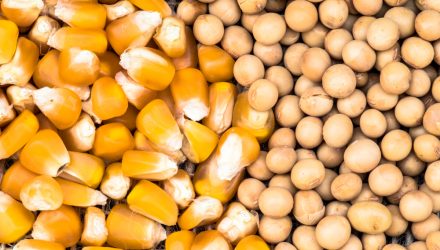Soybean and corn production is of paramount importance in South America. As such, supply disruptions could build a bullish case for higher prices in both of these commodities.
For soybeans, torrential rainfall in Brazil could make for supply disruptions that could push prices higher. It’s exactly what bullish soybean investors need. That’s because the commodity has been trending lower for much of the year. Soybean futures have been seeing primarily bearish bets, so a reversal of fortune is in order.
If the rainfall in Brazil continues to be a persistent issue and prices continue rising as a result of diminished supply forecasts, investors could consider the Teucrium Soybean Fund (SOYB). It provides similar exposure to what investors could obtain by trading in soybean futures contracts.
The fund is also an option for longer-term buy-and-hold investors who want to diversify their current portfolios with commodity exposure. Additionally, if short-term traders want to take advantage of upside in soybean prices, SOYB can serve that purposewell.
Corn Supply Disruption in Argentina
Other supply disruptions in South America are affecting agricultural commodities, and in this case, corn. Argentina is having to deal with a leafhopper plague that could put a sizable dent in corn production, affecting crop forecasts. In turn, this could be the catalyst for higher corn prices.
If the insect problem adds a tangible supply disruption, traders or investors who want to get ahead of a subsequent price move higher may want to consider the Teucrium Corn Fund (CORN). For the short-term trader, it’s an opportunity to buy the dip and likewise for the longer-term investor who wants to diversify their portfolios with agricultural commodities.
The fund tracks three futures contracts for corn traded on the Chicago Board of Trade. It includes 35% second-to-expire contracts, 30% third-to-expire contracts, and 35% December following the third to expire. The various contract exposures help the fund limit the negative effects of rolling contracts, especially during a market in contango.
For more news, information, and analysis, visit the Commodities Channel.

